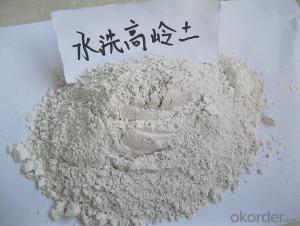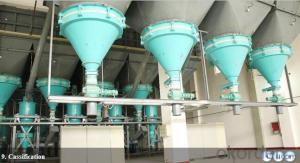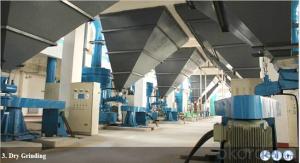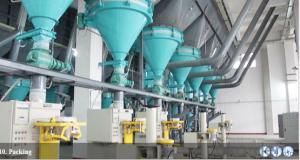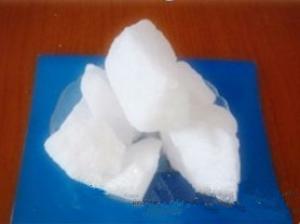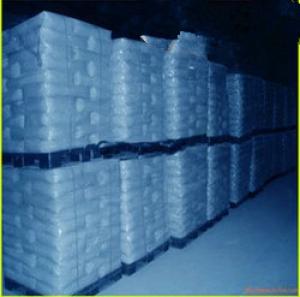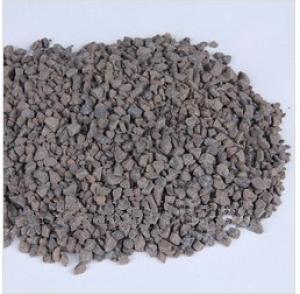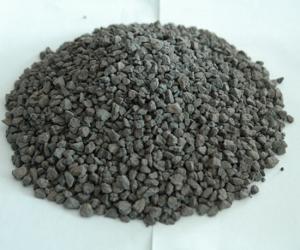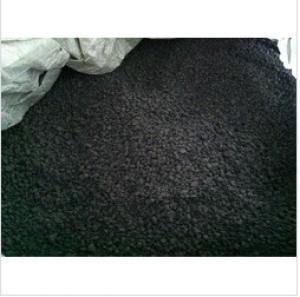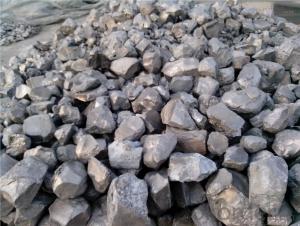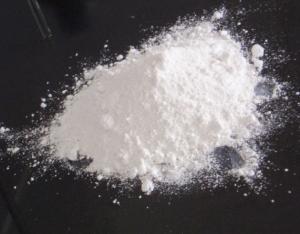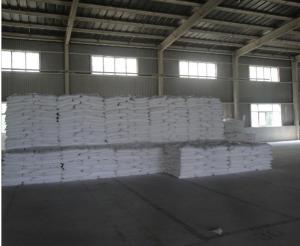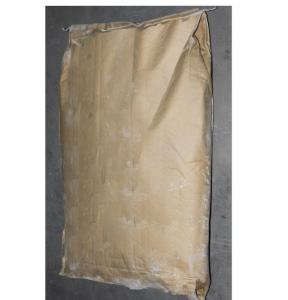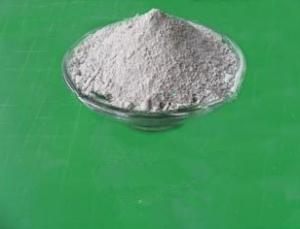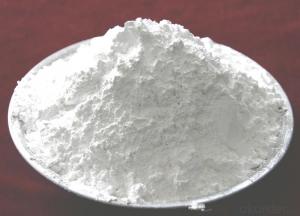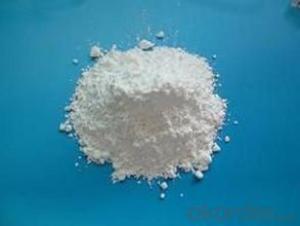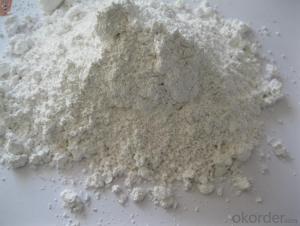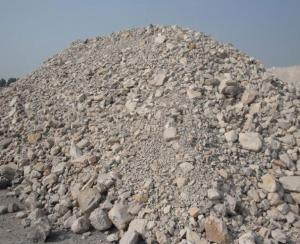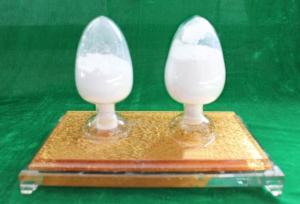CALCINED KAOLIN FOR COATING (GB-CK-96) SGS test
- Loading Port:
- Tianjin
- Payment Terms:
- TT OR LC
- Min Order Qty:
- 25 m.t.
- Supply Capability:
- 12000 m.t./month
OKorder Service Pledge
OKorder Financial Service
You Might Also Like
1. Benefits and Application
The GB-CK series of Kaolin based pigments are produced through delamination,
calcination and classification. The well-controlled processes ensure the GB series have no coarse particles and maintains an absolute minimum of 325 mesh residue, so the end user can achieve a high Hegman grind. The GB series pigments also have high brightness, strong hiding powder and superior dispersibility, and it is widely applied in latex paint, powder coating and electrophoresis coating.
Its main benefits are:
It’s the best extender of titanium dioxide with excellent opacity that can
improve efficiency and cut costs by partly replacing titanium dioxide;
It can easily disperse in water based systems;
It offers superfine particle and with excellent anti-settling property; It is inert to most acids and
alkaline at ambient temperature and offers good anticorrosive capabilities.
2. Typical Physical Properties
Item | GB-CK90 | GB-CK92 |
Brightness(T457) | 90.5%min | 92%min |
Particle Size (0-2micron)% | 50+/-2 | 60+/-5 |
Particle Size (0-10micron)% | 94% | 97% |
Refractivity | 1.62 | 1.62 |
Screen residue (325 mesh %) | 0.01max | 0.01max |
Oil Absorbency (g/100g) | 35+/-5 | 50+/-5 |
Dispersion (micron) | 55max | 50max |
pH | 5.5-7.0 | 5.5-7.0 |
Bulk Density (kg/m3) | 600 | 500 |
Specific Gravity (kg/m3) | 2600 | 2600 |
Moisture (%) | 0.5max | 0.5max |
3. Typical Chemical Properties
SiO2(%) | Al2O3(%) | Fe2O3(%) | TiO2(%) | CaO(%) | MgO(%) | CuO(%) | K2O(%) | Na2O(%) | MnO(%) |
52+/-2 | 45+/-2 | 0.50max | 1.5max | 0.4max | 0.2max | 0.004max | 0.05max | 0.15max | 0.004max |
4.Application
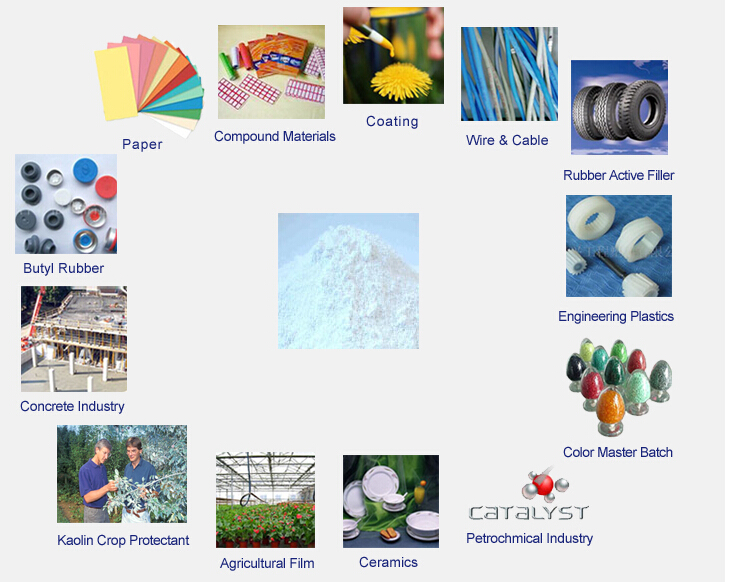
- Q:What is the good or bad of kaolin to distinguish? What is its criterion?What percentage does it contain and what element does it contain?
- Whiteness is one of the main parameters of kaolin's technological properties. Kaolin with high purity is white. Kaolin whiteness, natural whiteness, and whiteness after calcination.The color of kaolin is mainly related to its metal oxides or organic matter. Containing Fe2O3 was rose red, brown and yellow; containing Fe2+ was pale blue, pale green with pale brown; MnO2; organic matter tends to yellow, gray, green, black and other colors. The presence of these impurities, reduced the natural whiteness of kaolin, in which iron and titanium minerals will also affect the whiteness of the calcined, porcelain stains or scars appear.
- Q:Is kaolin soluble in water?The dispersion of kaolin in water is very unstable,At least stable 5-6 hours
- Kaolin is widely used in the paper making industry. There are two main areas. One is used in papermaking (or paper making), and the other is the pigment used in the surface coating process. For general cultural paper, the amount of filling accounts for 10-20% of the weight of the paper. For coated paper and paperboard (mainly light weight coated paper, coated paper and coated paperboard), in addition to filling, pigments are required, and the proportion of kaolin used to fill the pigment is 20-35% of the weight of the paper. Kaolin used in paper making, the paper can give good coverage performance and good gloss coating performance, but also increase the paper whiteness, opacity, smoothness and printability, greatly improve the quality of the paper.
- Q:Should kaolin be used in polyester production?
- Some studies show that under certain conditions, adding kaolin inorganic particles of polyester fiber still has good spinnability and hygroscopicity, dyeability are improved, and has certain anti UV properties. However, the mechanical properties of modified polyester fiber declined due to the decrease of crystallinity.
- Q:Are there any differences between bentonite and kaolin?
- Kaolin is a nonmetal mineral, is a kind of clay mineral mainly kaolinite clay and clay rock. Named for Jiangxi province Jingdezhen Gaoling village. The pure kaolin is white and delicate, soft soil, plasticity and fire resistance and other physical and chemical properties. Its good mineral is mainly composed of kaolinite halloysite, hydromica, illite, montmorillonite and quartz, feldspar and other minerals. Kaolin is widely used, mainly used for papermaking, ceramics and refractories, secondly used in coating, rubber filler, enamel glaze and white cement raw materials, a small amount of used plastics, paint, pigment, grinding wheel, pencil, cosmetics, soap, pesticide, medicine, textile, petroleum, chemical industry, building materials, defense and other industrial sectors.
- Q:Which mixer can be more evenly dispersed kaolin slurry?
- If you love to drink fruit juice drinks of all kinds, so it is recommended to select with mixer speed regulation, so that you can freely adjust the stirring speed, some fruit juice does not need to stir too broken to drink. Therefore, you can choose a mixer with speed control function.
- Q:How to identify kaolin?
- Washed out kaolin can produce many unexpected consequences when used in the deployment of other raw materials.
- Q:Is activated clay kaolin?
- Usually activated clay refers to the use of bentonite as raw material. But kaolin can also be used as the raw material of activated clay.
- Q:Heroes, help me see if this is quartz sand or kaolin? Is it valuable?
- With the above coating will be very fine of 600, 800, less is known regarding the paint application; glass quartz sand in general about 140 items, including water glass, in the East China area for water glass quartz sand price is 400~600 yuan; can also be directly or directly sold to dozens of pieces (ceramic factory the added value is not high), direct selling feel a little waste of resources.
- Q:What is the difference between diatomite and kaolin? Thank you
- Diatomite is composed of amorphous SiO2 and contains a small amount of Fe2O3, CaO, MgO, Al2O3 and organic impurities. Diatomite usually pale yellow or pale gray, soft, porous and light industry often used as insulation materials, filter materials, fillers, abrasive materials, water glass raw materials, decoloring agent of diatomite filter agent, catalyst carrier etc..
- Q:The cosmetic effect of kaolin?
- Kaolin is a nonmetal mineral, good quality products for whiteness high component, high temperature resistant, soft texture, good acid and alkali resistance, no stimulation to the skin, and has certain adsorption ability, remove skin dirt, grease on the skin absorption and waste etc..
1. Manufacturer Overview |
|
|---|---|
| Location | |
| Year Established | |
| Annual Output Value | |
| Main Markets | |
| Company Certifications | |
2. Manufacturer Certificates |
|
|---|---|
| a) Certification Name | |
| Range | |
| Reference | |
| Validity Period | |
3. Manufacturer Capability |
|
|---|---|
| a)Trade Capacity | |
| Nearest Port | |
| Export Percentage | |
| No.of Employees in Trade Department | |
| Language Spoken: | |
| b)Factory Information | |
| Factory Size: | |
| No. of Production Lines | |
| Contract Manufacturing | |
| Product Price Range | |
Send your message to us
CALCINED KAOLIN FOR COATING (GB-CK-96) SGS test
- Loading Port:
- Tianjin
- Payment Terms:
- TT OR LC
- Min Order Qty:
- 25 m.t.
- Supply Capability:
- 12000 m.t./month
OKorder Service Pledge
OKorder Financial Service
Similar products
New products
Hot products
Related keywords
